pifpaf
New member
This is the first topic of our summer serie: Summer school, heritage & Savoir Faire.
Watch out: here comes a spoiler! The following text reveals most of the content that will be seen at the exhibition Automatons & Marvels; so if you plan to attend, (as you should, since it has become so easy to travel), don't read any further. Add this page to your favorites, so you can compare it to your impressions later.
“L’écrivain:”



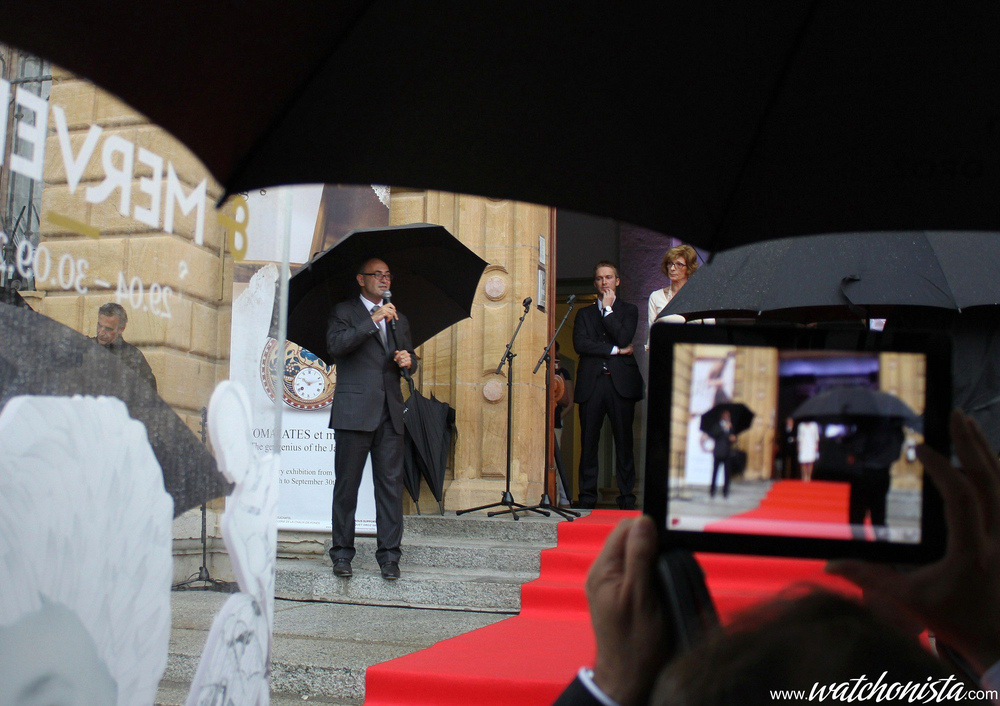
Are you comfortably seated in front of your PC? This morning or this evening, were you almost as comfortably seated in your car? With the AC, the cup holder, the sound system or for the purists, the hydro pneumatic suspensions.
You sail toward work or home, undisturbed, on a sea as flat as a mirror, since the roads are so well paved. When it is time to go on vacation, if one shatters the speed limits from time to time, it takes half a day; in the morning one is in a megalopolis and in the afternoon one walks in the water or in the snow. If the trip is too long, one takes a plane, and 24 hours later one is on another continent.
Travelling has become so easy that it is almost commonplace. But at the end of the 18th century, it was a different ball of wax. The finest roads where barely cobbled; most of the time, they were made out of dirt or gravel; on which the lathering highwaymen served as traffic lights and radar detectors. Whether riding or sitting in a carriage pulled by horses, one could travel a few dozen kilometers per day at best, and then have to hastily find an inn, or end up devoured by wolves.
However, despite the jolts, the dangers and the bad weather, all the greats from the European courts visited Pierre Jaquet-Droz, in his residence located deep in the mountains, at the Chaux-de-Fond.
Nowadays, such an enthusiasm might look excessive, but the work of JAQUET DROZ must be placed in its historical context.
The androids, the central pieces of JAQUET DROZ's automatons collection, are a quantum leap in the history of computers.
If the Antikythera mechanism is the best example of an antique computer (it allowed for complex calculations related to calendars, astronomy, etc.), it was neither programmable nor self-powered...
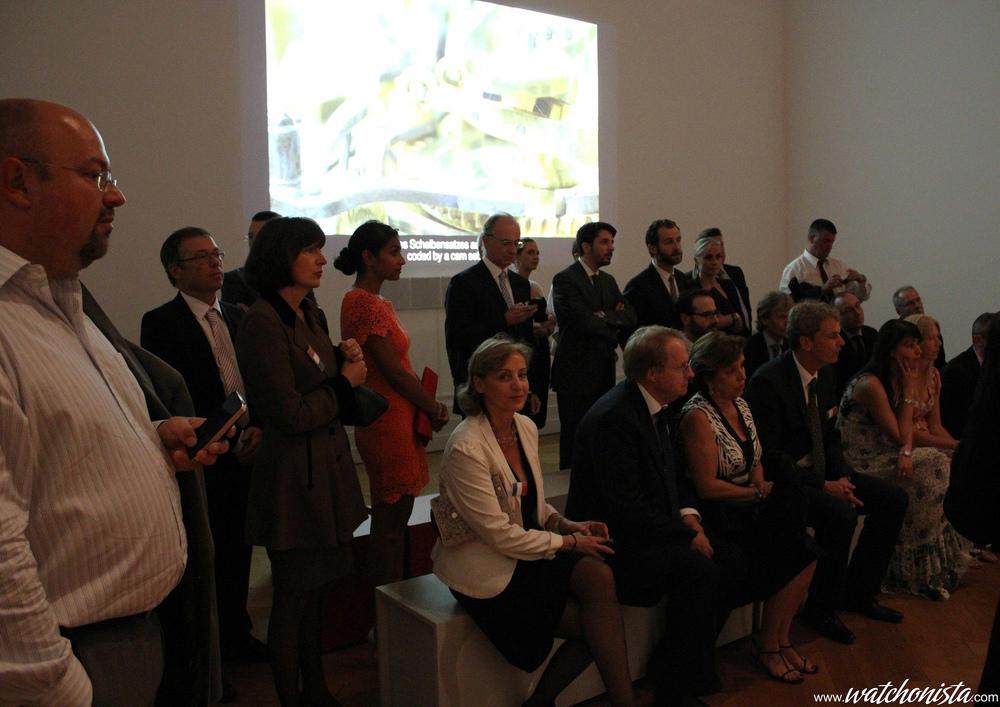
The greatest of the recent inventions (the 1955 Citroen DS, the Concorde, the Macintosh, the http protocol) were not new technologies, but rather the convergence of several ground-breaking technologies, which increased the individual qualities of each of these innovations exponentially. The realism of Jaquet-Droz's androids is such that during one of the many exhibitions held at royal courts, their creator almost ended up on the stake like a sorcerer!
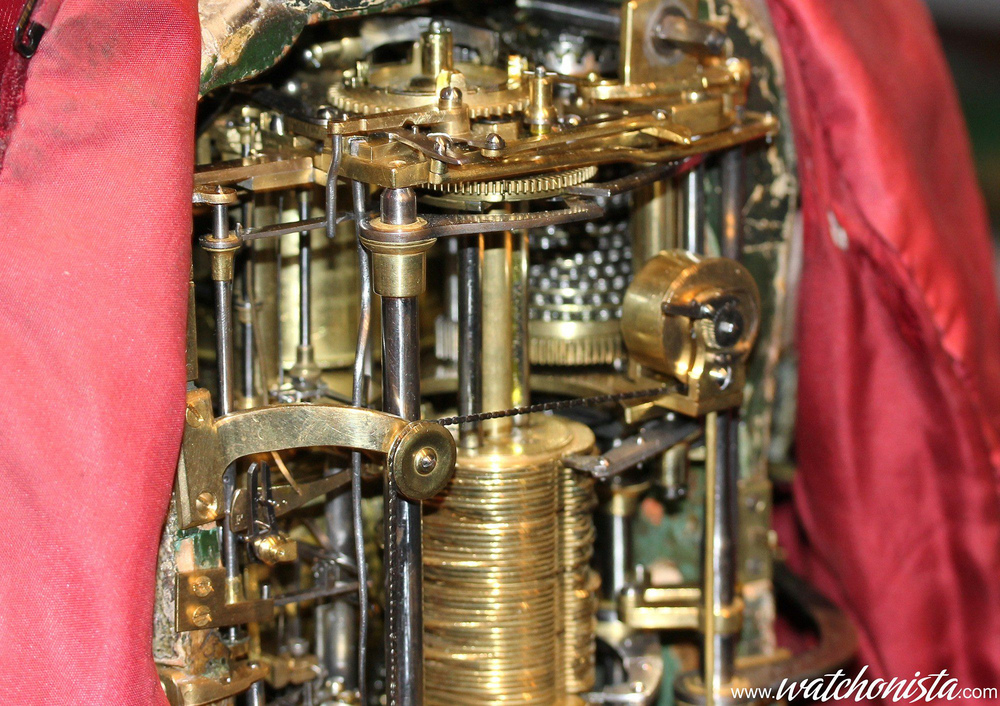
Indeed, in 1758 YouTube was yet to be invented; one had to be physically present to present one's work. At the beginning of April 1758, Pierre Jaquet-Droz was already 37, and his exceptional work on large clocks was common knowledge in the whole canton. Lord Georges Keith, the governor of the Neuchâtel province and well acquainted with the European courts, helped to introduce PIERRE JAQUET DROZ to the court of the King of Spain, through Don Jacynto Jovert acting as intermediary.
Mrs Hayek:

PIERRE JAQUET DROZ and his craftsman, Jacques Gevril (whose name is utilized by a cheap Spanish watch brand), as well as his father-in-law, Abraham-Louis Sandoz-Gendre(whose diary recounts this trip in detail) will embark on a 1500km trip in a cart customized to carry six clocks. This 49-day journey (at a fantastic average speed of 30km per day, slower than by foot), ends up as a disappointment. The king of Spain is detained by the illness of his wife, Marie-Thérèse of Portugal; and only the heaven-sent hospitality of Don Jacyntho Jovert, prevents Pierre Jaquet Droz, his craftsman and Jacques Gevril from returning prematurely, which would have left them very distressed. Following the advice of Georges "Lord Marischal" Keith, their benefactor welcomes Jaquet-Droz and his companions with a lavishness that one usually reserves for close family members. Our grateful friends will use the three-month wait, to repair all the clocks and watches of the Spanish Lord's house. To this day, the generosity of Don Jovert is still remembered, as his name has been immortalized through the rebirth of the Jaquet-Droz house by the Swatch Group.
After the death of the Queen, Ferdinand VI is back in business in September 1758. One should know that the Sovereign was more of an artist than a warrior, and that during his 13-year reign he systematically favored the arts and culture, notably by sponsoring the famous castrato Farinelli. The Jaquet-Droz team is eventually welcomed to the royal palace and the demonstration of the clocks is a triumph.
The assortment of six clocks brought by Jaquet-Droz and his companions consisted of the following pieces:
-One long-case clock
-One chiming clock, with flutes and serinette (from the French "serin", canary)
-A clock called "Le Nègre ", which answered diverse questions by hitting a chime, for example "what time is it?" (To this day, the way this clock worked is still nebulous).
-A clock called "The stork and the Fox". It featured a decoration themed after de La Fontaine's fable.
-A "perpetual motion" clock: its automatic winding system used the dilatation of different metals (an ancestor of the Atmos).
-The "Shepherd's clock", which featured a dog guarding a basket of apples: if one took the apple, it would start to bark. It seems that the barking was so natural that it triggered the response of King Ferdinand VI's hound, and that a few frightened courtiers left the room. (The King's dog looked more courageous than the courtiers...)This super-complex clock included a series of articulated figurines, amongst which a shepherd, in a country-style scenery; every character producing its own specific sound.
Three of these pieces were sold to the court for 2000 pistols and one was offered as a gift to Don Jovert; the "Stork and the Fox" as well as the "Shepherd" and his dog, were offered as a gift to King Ferdinand VI. It was probably one of the last moments of joy in Ferdinand VI's life: he died the following year at 45, grief-stricken from having lost of his wife...
This brilliant demonstration of Pierre Jaquet-Droz's genius spread like wild fire throughout Europe. His success opened the door to several European courts. Therefore, he was not only a precursor in horology, information technology and robotics, but also a precursor in the watchmaking business (he especially sold lots of pieces in China, through his London subsidiary).
10 years after his success in Madrid, Pierre Jaquet-Droz had to reinvent himself. Assisted by his son Henri-Louis, and his adopted son and apprentice Jean-Frédéric Leschot, he took five years to create four automatons, of which three have been preserved until today. The fourth of these automatons, "The cave", was a giant diorama picturing a palace carved in the rock and its French garden, punctuated with a series of animated figurines. Its large size (it covered a surface area of several square meters) was its undoing. During the tumultuous adventures of Napoleon, the three androids often changed hands, as circumstances dictated. But the diorama "The cave" was not safely movable; in all likelihood, this led to its destruction.

The three remaining automatons represent the heights of creativity and good workmanship.
Ladies first, the watch museum of La Chaux-de-Fonds holds «La Musicienne». This piece was mainly built by Henri-Louis, who had almost finished his musical studies.
Musical automatons, like singing birds, usually simulate the melodies with silent mechanisms, synchronized through an internal sound system.
«La Musicienne» pushes the envelope to its maximum. First of all, the maiden is reproduced at the 1/1 scale, and as was explained earlier, it is an android: the body houses the mechanism that moves the automaton's hands and fingers (independently). Therefore, it can play any instrument adapted to its morphology: in reality it plays the mini-organ featured in the set, the sound is very convincing...
But in the end, one is so mesmerized by the fluidity and the gracefulness of its movements, that one does not really notice the music. The sight is truly awesome and if mechanically this piece is perhaps the simplest of the three works, it is also the most moving.
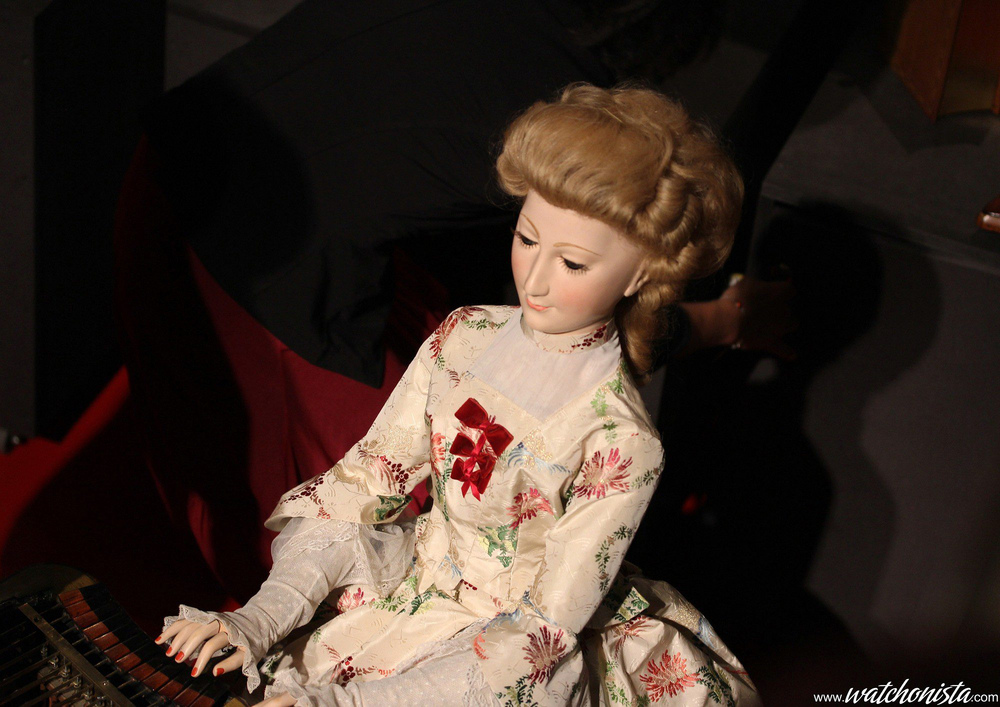


The International Watchmaking Museum of La Chaux-de-Fond, which holds «La Musicienne», is worth checking out. La Chaux is one of the core places in the history of watchmaking, and watches are central to the economy and the heritage of the city. This museum, created in 1902 through a confederation council, pays a comprehensive tribute to watchmaking, with this exhibition of more than 5000 pieces.
By comparison, the Patek museum features rarer watches and pure collector's pieces, whereas La Chaux Museum includes many historical works or even key pieces.
For example, the famous planetary mechanism of François Ducommun: it is an integral and almost exactly scaled reproduction of the solar system, as it was known in 1816 (thus, without Neptune), featuring all the known satellites.
It is an exceptional work which Ducommun exhibited for free, to the great delight of the inhabitants of La Chaux.
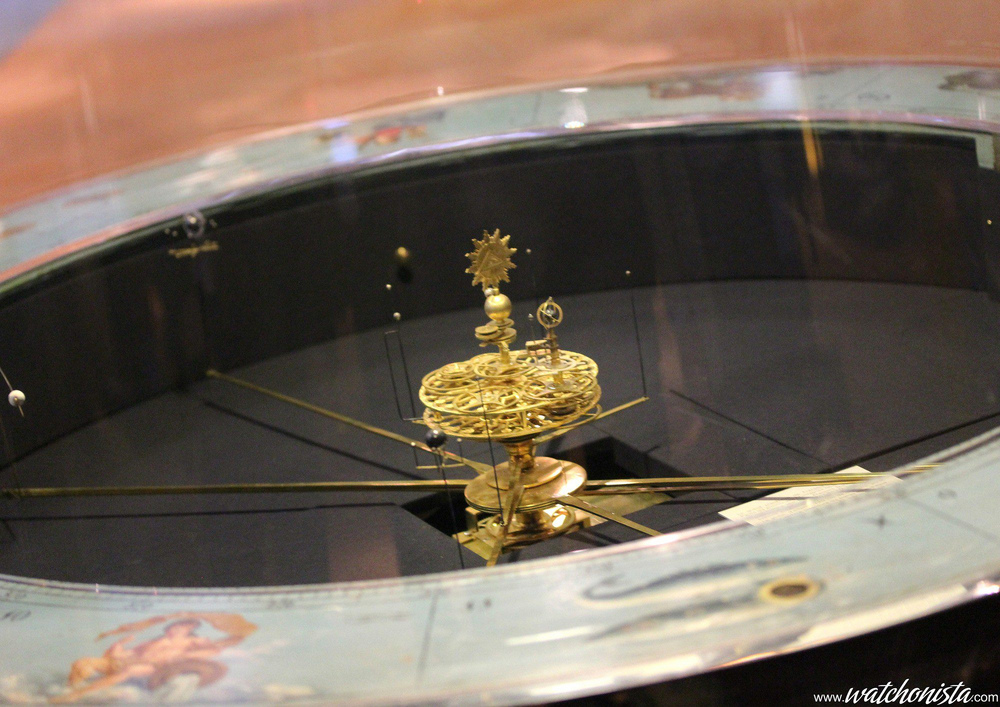
One can also see the Astrarium of Giovanni Da Dondi, a remarkable work that tells time as well as the location of the seven corresponding planets, after the work of Claudius Ptolemy. Since the original was destroyed in the 16th century, the exhibited piece is a reproduction.

But above all, one can see the famous "The stork and the Fox" clock created by Pierre Jaquet-Droz.
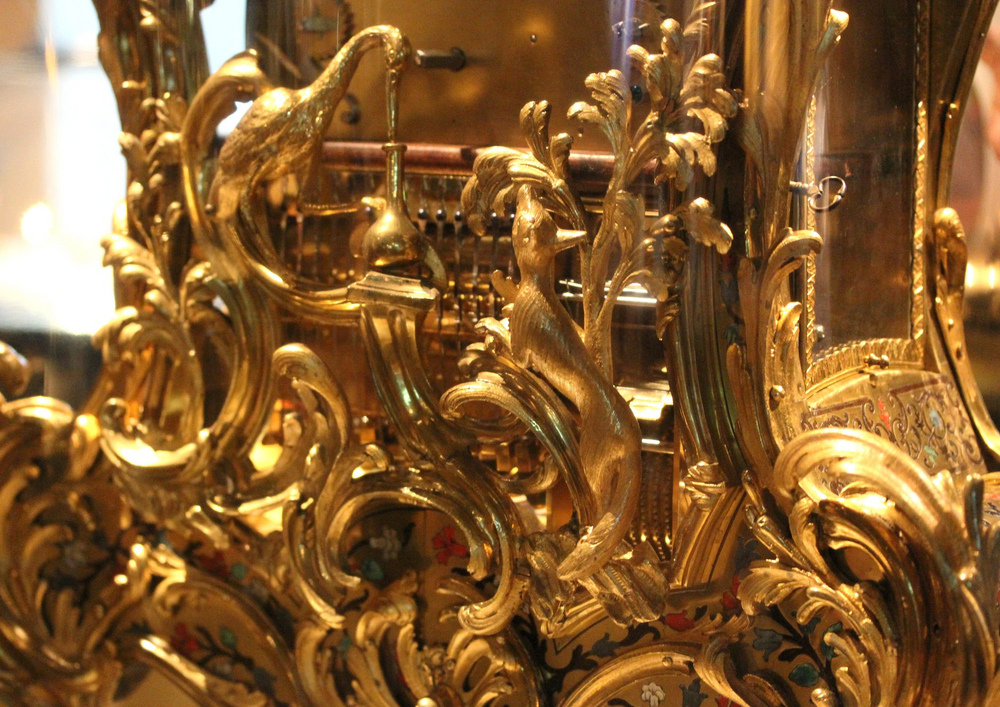
The chateau des monts which houses the watch museum of Le Locle hosts «Le Dessinateur» (The Draughtsman). Using a stylus, it can execute two drawings out of the four that can be selected: a dog ("my doggie"), a portrait of King Louis the XV, a portrait of King Louis the XVI together with Marie Antoinette and the funniest, an allegory: Cupid riding a cart pulled by a butterfly. This automaton was mainly built by Henri-Louis and Jean-Frédéric Leschot; Like «La Musicienne», it is incredibly realistic in the way it works. It draws in several steps, starting with the general sketch and ending with the details, all of it with the movements of a real drawer.


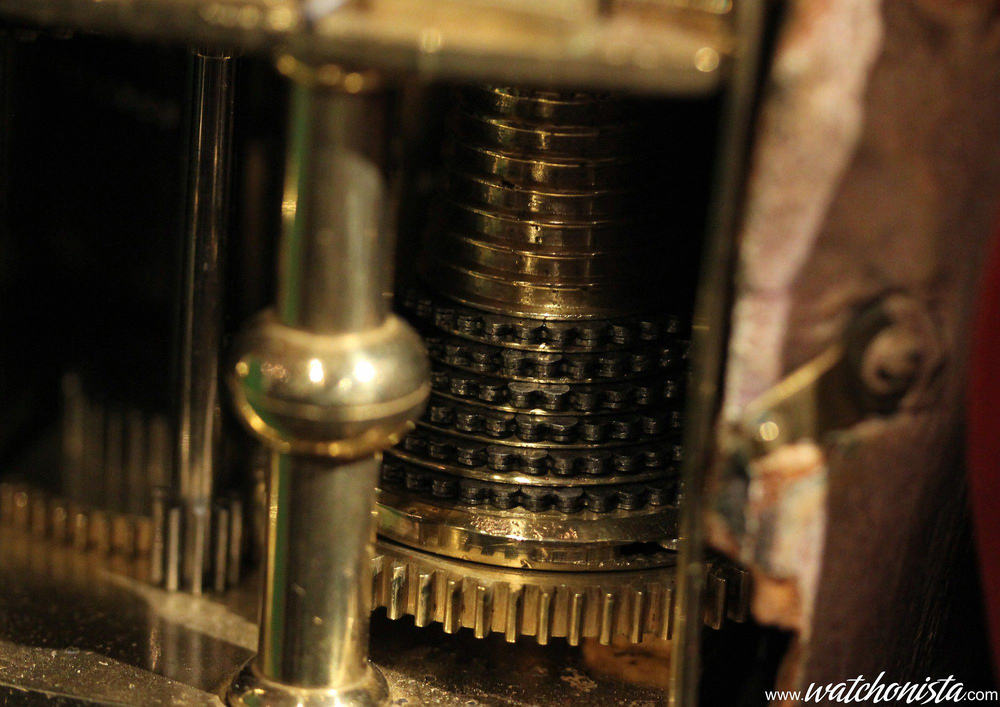

The castle houses some beautiful pieces, notably some creations of Jaquet-Droz, parts of the Sandoz collection; but besides its hosts, the house also deserves our attention. The chateau des monts is located on the border of Le Locle. Actually it is one of the horology historical houses. Decades upon decades, the mansion successively belonged to the Sandoz-Gendre, Dubois, Ducommun and Nardin families…
Most of these names are rather famous in the watchmaking industry and the kinships are often recognized.
One has to understand that during the 18th and 19th centuries families were extensive, the population was scarce and marriages often took place between members of the bourgeoisie from the province of Neuchatel; this category was even rarer than the peasant-watchmakers. Aside from the historical standpoint and the architectural jewel of horology, the chateau des monts is located in a perfect setting, if of course the building and the park are maintained in the "Swiss way"; the most impressive feature is its surroundings: the park is bordered by fields, trees and glades which throw you into Heidi's world.





Finally, the attraction of the exhibition, the masterpiece among Jaquet-Droz's creations: the "Writer" android, kept in the Art and History museum of Neuchatel. This building is fascinating, because it was designed and built from the beginning as a museum, which was extremely rare prior the 20th century.
It is also a perfectly preserved testimony to the arts and crafts period of the 19th century; the main entrance features a triptych of allegoric frescos about the arts, industry and religion, which were the patrons' fundamental preoccupations.
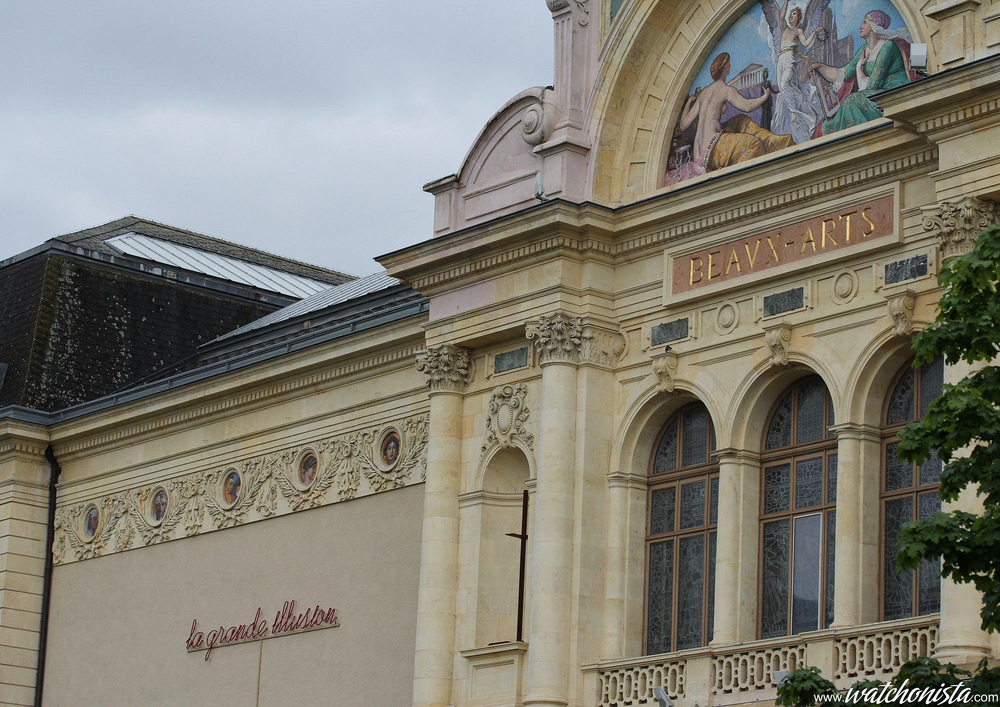
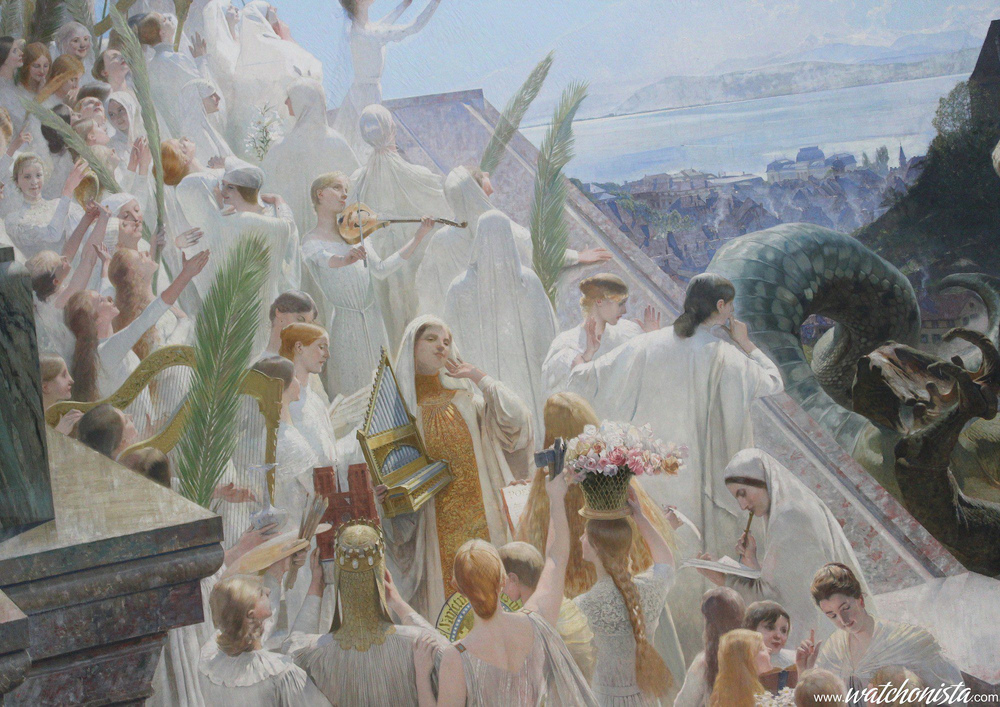
The MAHN also houses very fine creations from the Jaquet-Droz family. For example, a vestibule clock, which looks like a singing bird cage at a 1/1 scale, the center of the cage featuring crystal rods which picture water jets. When the birds sing, the crystal rotates and the "watery" effect is stunning.

There are also more classical pieces, such as a walnut clock created by JF Leschot, with magnificently designed hands.

Finally, one of the most fascinating pieces is part of the Patek museum collection; it is a coach watch named "The birds", which features six complications: moon phase, GMT, alarm, hour strike, "to order" repeater and flying second!! A true personal assistant from the beginning of the 19th century.

But this amazing horologic work gives way to the technical feat called "«L’ecrivain»"; as explained earlier in the topic, it is a major innovation in the domain of computers and it is, by far the most complex of Jaquet-Droz's creations (About 6000 parts, compared to 600 in a contemporary Grande complication).

The way we consider this android is undoubtedly very different from the way our ancestors did. Indeed, from a watch lover's standpoint, the sight of the android conscientiously writing a text of 43 customized characters with a quill, gives way to the sight the working mechanism. The concept of 3D, which is at the core of modern watchmaking and at the core of professional and leisure robotics, took a tangible form with this type of automaton.

The 40 cams are controlled by a customizable disc sitting at the bottom of the android's back (26 small and 14 capitals); They hold all the data which allow «L’ecrivain» to write in abscissa, ordinate and to control the pressure transmitted to the stroke. Therefore, the mechanism must be designed to be adaptable and accurate enough to manage very diverse data depending on the text. When one knows that in a watch movement, every wheel sits at a defined place, with defined teeth, in order to manage linear data, one realizes just how amazing a feat JAQUET DROZ accomplishes in 1773!
Because to be able to develop such an automaton (it took five years), Jaquet-Droz had to ignore a large part of the rules of horology, and had to rely on other specialties such as anatomy, as the structure of the automaton's arms was inspired by the flesh and bone.

For that matter, Pierre Jaquet-Droz was a recognized prosthetics technician; thus, he could utilize his medical knowledge to create the automaton. And certain aristocrats and the bourgeois from Europe flocked to his dwelling in the mountains to benefit from his medicine. If some came to seek the care of JAQUET DROZ, others made the trip to see his automatons in action. Indeed these pieces were also the ancestors of the "Talking-pieces", so dear to the contemporary watchmaking tradeshows.

And this vocation is still ongoing: as a part of the partnership with "Automates et Merveilles", Jaquet-Droz has invited the collectors, the journalists and some of the horologic blogosphere to an event intended to give media coverage to these vintage "Talking-pieces". And, in conditions of comfort and security inconceivable in the 18th century, we attended the opening cocktail of the exhibition of Neuchâtel. It was followed by a dinner at the Hôtel du Pérou. Finally, a custom fireworks display right in Neuchâtel and some animations of Singing Birds (one of the specialties of the JAQUET DROZ family) were the highlight of the evening.
Thiebault Benz (Jaquet-Droz), Ariel Adams (A Blog to Read), Marc André Deschoux (The Watch TV, Alexander Friedman (Watchonista)


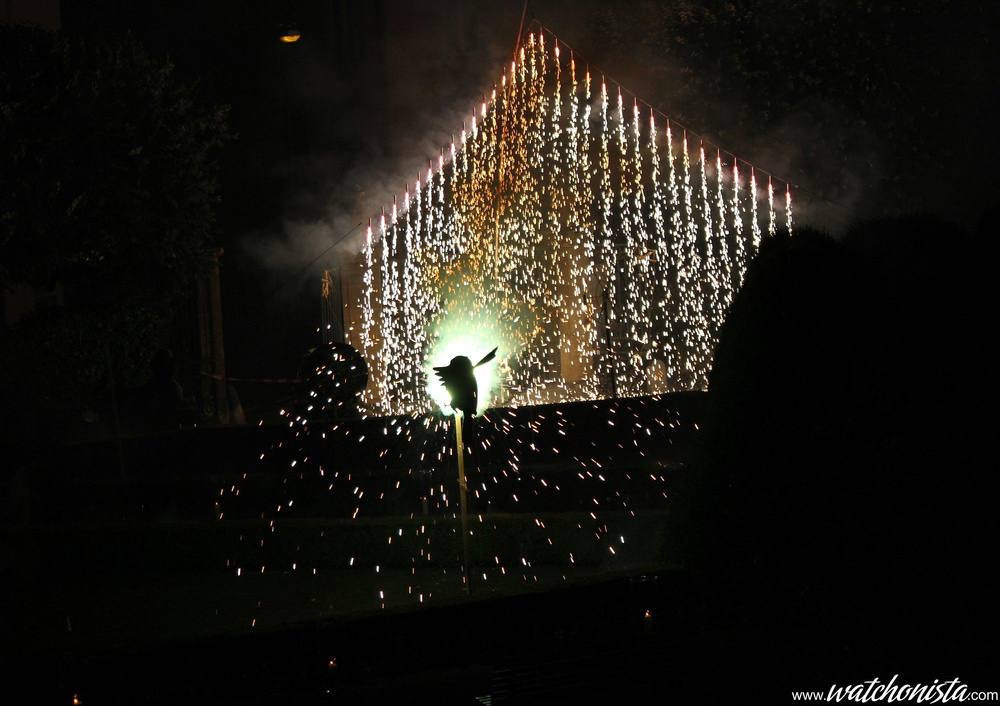

The next day, we had the opportunity to visit the MIH and the château des monts, under a magnificent sun. It has been a delight to benefit from Vincent Davaux's knowledgeable commentaries and to meet our friends from the Parisian horlogical web.
The French horological web by Toutatis from Passion Horlogère: Vinvent Daveau (L'express), Malik "pifpaf" Bahri (Watchonista), René Giroud (Pole Horlogerie), Jean-Philippe Tarot (Montres de Luxe), Thomas Gisclard (The Watch Observer), Stephan Ciejka (La Reveue des Montres)


The exhibition will be held until September 30th, with many demonstrations of the automatons planned. For the European enthusiasts, it would be a shame not to attend this event, as not only do these androids represent a major turning point for the watchmaking industry, but also for many artistic or scientific specialties. Furthermore, traveling to the Canton of Neuchâtel has become easy. For those of you who are far away, I hope you will have as much pleasure reading this article as you would attending "Automates & Merveilles".
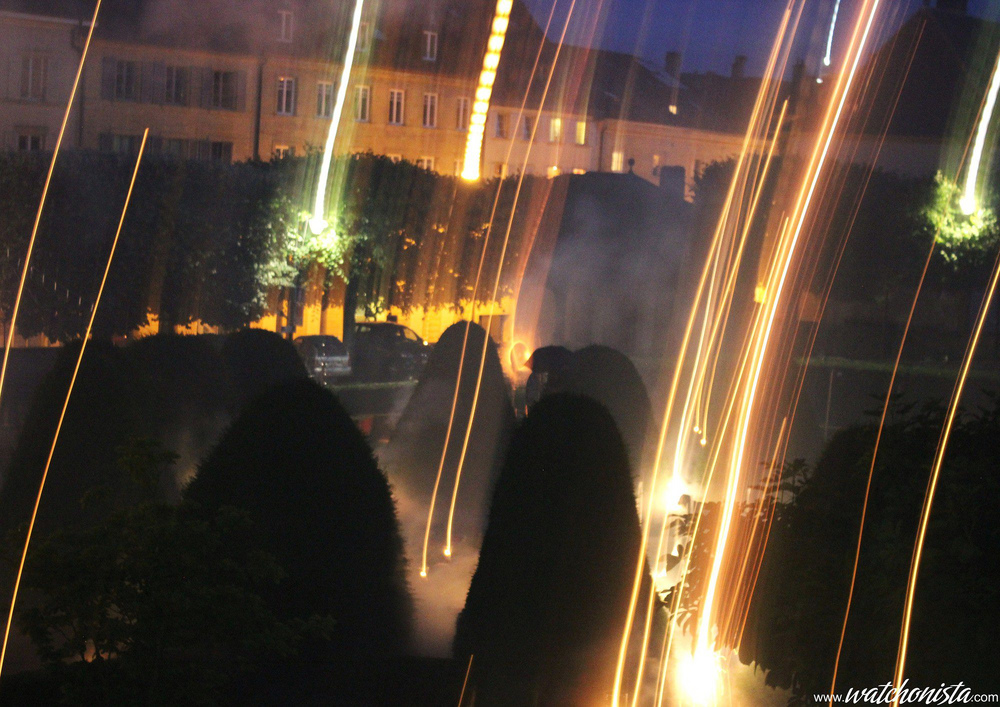
Watch out: here comes a spoiler! The following text reveals most of the content that will be seen at the exhibition Automatons & Marvels; so if you plan to attend, (as you should, since it has become so easy to travel), don't read any further. Add this page to your favorites, so you can compare it to your impressions later.
“L’écrivain:”




Are you comfortably seated in front of your PC? This morning or this evening, were you almost as comfortably seated in your car? With the AC, the cup holder, the sound system or for the purists, the hydro pneumatic suspensions.
You sail toward work or home, undisturbed, on a sea as flat as a mirror, since the roads are so well paved. When it is time to go on vacation, if one shatters the speed limits from time to time, it takes half a day; in the morning one is in a megalopolis and in the afternoon one walks in the water or in the snow. If the trip is too long, one takes a plane, and 24 hours later one is on another continent.
Travelling has become so easy that it is almost commonplace. But at the end of the 18th century, it was a different ball of wax. The finest roads where barely cobbled; most of the time, they were made out of dirt or gravel; on which the lathering highwaymen served as traffic lights and radar detectors. Whether riding or sitting in a carriage pulled by horses, one could travel a few dozen kilometers per day at best, and then have to hastily find an inn, or end up devoured by wolves.
However, despite the jolts, the dangers and the bad weather, all the greats from the European courts visited Pierre Jaquet-Droz, in his residence located deep in the mountains, at the Chaux-de-Fond.
Nowadays, such an enthusiasm might look excessive, but the work of JAQUET DROZ must be placed in its historical context.
The androids, the central pieces of JAQUET DROZ's automatons collection, are a quantum leap in the history of computers.
If the Antikythera mechanism is the best example of an antique computer (it allowed for complex calculations related to calendars, astronomy, etc.), it was neither programmable nor self-powered...

The greatest of the recent inventions (the 1955 Citroen DS, the Concorde, the Macintosh, the http protocol) were not new technologies, but rather the convergence of several ground-breaking technologies, which increased the individual qualities of each of these innovations exponentially. The realism of Jaquet-Droz's androids is such that during one of the many exhibitions held at royal courts, their creator almost ended up on the stake like a sorcerer!

Indeed, in 1758 YouTube was yet to be invented; one had to be physically present to present one's work. At the beginning of April 1758, Pierre Jaquet-Droz was already 37, and his exceptional work on large clocks was common knowledge in the whole canton. Lord Georges Keith, the governor of the Neuchâtel province and well acquainted with the European courts, helped to introduce PIERRE JAQUET DROZ to the court of the King of Spain, through Don Jacynto Jovert acting as intermediary.
Mrs Hayek:

PIERRE JAQUET DROZ and his craftsman, Jacques Gevril (whose name is utilized by a cheap Spanish watch brand), as well as his father-in-law, Abraham-Louis Sandoz-Gendre(whose diary recounts this trip in detail) will embark on a 1500km trip in a cart customized to carry six clocks. This 49-day journey (at a fantastic average speed of 30km per day, slower than by foot), ends up as a disappointment. The king of Spain is detained by the illness of his wife, Marie-Thérèse of Portugal; and only the heaven-sent hospitality of Don Jacyntho Jovert, prevents Pierre Jaquet Droz, his craftsman and Jacques Gevril from returning prematurely, which would have left them very distressed. Following the advice of Georges "Lord Marischal" Keith, their benefactor welcomes Jaquet-Droz and his companions with a lavishness that one usually reserves for close family members. Our grateful friends will use the three-month wait, to repair all the clocks and watches of the Spanish Lord's house. To this day, the generosity of Don Jovert is still remembered, as his name has been immortalized through the rebirth of the Jaquet-Droz house by the Swatch Group.
After the death of the Queen, Ferdinand VI is back in business in September 1758. One should know that the Sovereign was more of an artist than a warrior, and that during his 13-year reign he systematically favored the arts and culture, notably by sponsoring the famous castrato Farinelli. The Jaquet-Droz team is eventually welcomed to the royal palace and the demonstration of the clocks is a triumph.
The assortment of six clocks brought by Jaquet-Droz and his companions consisted of the following pieces:
-One long-case clock
-One chiming clock, with flutes and serinette (from the French "serin", canary)
-A clock called "Le Nègre ", which answered diverse questions by hitting a chime, for example "what time is it?" (To this day, the way this clock worked is still nebulous).
-A clock called "The stork and the Fox". It featured a decoration themed after de La Fontaine's fable.
-A "perpetual motion" clock: its automatic winding system used the dilatation of different metals (an ancestor of the Atmos).
-The "Shepherd's clock", which featured a dog guarding a basket of apples: if one took the apple, it would start to bark. It seems that the barking was so natural that it triggered the response of King Ferdinand VI's hound, and that a few frightened courtiers left the room. (The King's dog looked more courageous than the courtiers...)This super-complex clock included a series of articulated figurines, amongst which a shepherd, in a country-style scenery; every character producing its own specific sound.
Three of these pieces were sold to the court for 2000 pistols and one was offered as a gift to Don Jovert; the "Stork and the Fox" as well as the "Shepherd" and his dog, were offered as a gift to King Ferdinand VI. It was probably one of the last moments of joy in Ferdinand VI's life: he died the following year at 45, grief-stricken from having lost of his wife...
This brilliant demonstration of Pierre Jaquet-Droz's genius spread like wild fire throughout Europe. His success opened the door to several European courts. Therefore, he was not only a precursor in horology, information technology and robotics, but also a precursor in the watchmaking business (he especially sold lots of pieces in China, through his London subsidiary).
10 years after his success in Madrid, Pierre Jaquet-Droz had to reinvent himself. Assisted by his son Henri-Louis, and his adopted son and apprentice Jean-Frédéric Leschot, he took five years to create four automatons, of which three have been preserved until today. The fourth of these automatons, "The cave", was a giant diorama picturing a palace carved in the rock and its French garden, punctuated with a series of animated figurines. Its large size (it covered a surface area of several square meters) was its undoing. During the tumultuous adventures of Napoleon, the three androids often changed hands, as circumstances dictated. But the diorama "The cave" was not safely movable; in all likelihood, this led to its destruction.

The three remaining automatons represent the heights of creativity and good workmanship.
Ladies first, the watch museum of La Chaux-de-Fonds holds «La Musicienne». This piece was mainly built by Henri-Louis, who had almost finished his musical studies.
Musical automatons, like singing birds, usually simulate the melodies with silent mechanisms, synchronized through an internal sound system.
«La Musicienne» pushes the envelope to its maximum. First of all, the maiden is reproduced at the 1/1 scale, and as was explained earlier, it is an android: the body houses the mechanism that moves the automaton's hands and fingers (independently). Therefore, it can play any instrument adapted to its morphology: in reality it plays the mini-organ featured in the set, the sound is very convincing...
But in the end, one is so mesmerized by the fluidity and the gracefulness of its movements, that one does not really notice the music. The sight is truly awesome and if mechanically this piece is perhaps the simplest of the three works, it is also the most moving.



The International Watchmaking Museum of La Chaux-de-Fond, which holds «La Musicienne», is worth checking out. La Chaux is one of the core places in the history of watchmaking, and watches are central to the economy and the heritage of the city. This museum, created in 1902 through a confederation council, pays a comprehensive tribute to watchmaking, with this exhibition of more than 5000 pieces.
By comparison, the Patek museum features rarer watches and pure collector's pieces, whereas La Chaux Museum includes many historical works or even key pieces.
For example, the famous planetary mechanism of François Ducommun: it is an integral and almost exactly scaled reproduction of the solar system, as it was known in 1816 (thus, without Neptune), featuring all the known satellites.
It is an exceptional work which Ducommun exhibited for free, to the great delight of the inhabitants of La Chaux.

One can also see the Astrarium of Giovanni Da Dondi, a remarkable work that tells time as well as the location of the seven corresponding planets, after the work of Claudius Ptolemy. Since the original was destroyed in the 16th century, the exhibited piece is a reproduction.

But above all, one can see the famous "The stork and the Fox" clock created by Pierre Jaquet-Droz.

The chateau des monts which houses the watch museum of Le Locle hosts «Le Dessinateur» (The Draughtsman). Using a stylus, it can execute two drawings out of the four that can be selected: a dog ("my doggie"), a portrait of King Louis the XV, a portrait of King Louis the XVI together with Marie Antoinette and the funniest, an allegory: Cupid riding a cart pulled by a butterfly. This automaton was mainly built by Henri-Louis and Jean-Frédéric Leschot; Like «La Musicienne», it is incredibly realistic in the way it works. It draws in several steps, starting with the general sketch and ending with the details, all of it with the movements of a real drawer.




The castle houses some beautiful pieces, notably some creations of Jaquet-Droz, parts of the Sandoz collection; but besides its hosts, the house also deserves our attention. The chateau des monts is located on the border of Le Locle. Actually it is one of the horology historical houses. Decades upon decades, the mansion successively belonged to the Sandoz-Gendre, Dubois, Ducommun and Nardin families…
Most of these names are rather famous in the watchmaking industry and the kinships are often recognized.
One has to understand that during the 18th and 19th centuries families were extensive, the population was scarce and marriages often took place between members of the bourgeoisie from the province of Neuchatel; this category was even rarer than the peasant-watchmakers. Aside from the historical standpoint and the architectural jewel of horology, the chateau des monts is located in a perfect setting, if of course the building and the park are maintained in the "Swiss way"; the most impressive feature is its surroundings: the park is bordered by fields, trees and glades which throw you into Heidi's world.





Finally, the attraction of the exhibition, the masterpiece among Jaquet-Droz's creations: the "Writer" android, kept in the Art and History museum of Neuchatel. This building is fascinating, because it was designed and built from the beginning as a museum, which was extremely rare prior the 20th century.
It is also a perfectly preserved testimony to the arts and crafts period of the 19th century; the main entrance features a triptych of allegoric frescos about the arts, industry and religion, which were the patrons' fundamental preoccupations.


The MAHN also houses very fine creations from the Jaquet-Droz family. For example, a vestibule clock, which looks like a singing bird cage at a 1/1 scale, the center of the cage featuring crystal rods which picture water jets. When the birds sing, the crystal rotates and the "watery" effect is stunning.

There are also more classical pieces, such as a walnut clock created by JF Leschot, with magnificently designed hands.

Finally, one of the most fascinating pieces is part of the Patek museum collection; it is a coach watch named "The birds", which features six complications: moon phase, GMT, alarm, hour strike, "to order" repeater and flying second!! A true personal assistant from the beginning of the 19th century.

But this amazing horologic work gives way to the technical feat called "«L’ecrivain»"; as explained earlier in the topic, it is a major innovation in the domain of computers and it is, by far the most complex of Jaquet-Droz's creations (About 6000 parts, compared to 600 in a contemporary Grande complication).

The way we consider this android is undoubtedly very different from the way our ancestors did. Indeed, from a watch lover's standpoint, the sight of the android conscientiously writing a text of 43 customized characters with a quill, gives way to the sight the working mechanism. The concept of 3D, which is at the core of modern watchmaking and at the core of professional and leisure robotics, took a tangible form with this type of automaton.

The 40 cams are controlled by a customizable disc sitting at the bottom of the android's back (26 small and 14 capitals); They hold all the data which allow «L’ecrivain» to write in abscissa, ordinate and to control the pressure transmitted to the stroke. Therefore, the mechanism must be designed to be adaptable and accurate enough to manage very diverse data depending on the text. When one knows that in a watch movement, every wheel sits at a defined place, with defined teeth, in order to manage linear data, one realizes just how amazing a feat JAQUET DROZ accomplishes in 1773!
Because to be able to develop such an automaton (it took five years), Jaquet-Droz had to ignore a large part of the rules of horology, and had to rely on other specialties such as anatomy, as the structure of the automaton's arms was inspired by the flesh and bone.

For that matter, Pierre Jaquet-Droz was a recognized prosthetics technician; thus, he could utilize his medical knowledge to create the automaton. And certain aristocrats and the bourgeois from Europe flocked to his dwelling in the mountains to benefit from his medicine. If some came to seek the care of JAQUET DROZ, others made the trip to see his automatons in action. Indeed these pieces were also the ancestors of the "Talking-pieces", so dear to the contemporary watchmaking tradeshows.

And this vocation is still ongoing: as a part of the partnership with "Automates et Merveilles", Jaquet-Droz has invited the collectors, the journalists and some of the horologic blogosphere to an event intended to give media coverage to these vintage "Talking-pieces". And, in conditions of comfort and security inconceivable in the 18th century, we attended the opening cocktail of the exhibition of Neuchâtel. It was followed by a dinner at the Hôtel du Pérou. Finally, a custom fireworks display right in Neuchâtel and some animations of Singing Birds (one of the specialties of the JAQUET DROZ family) were the highlight of the evening.
Thiebault Benz (Jaquet-Droz), Ariel Adams (A Blog to Read), Marc André Deschoux (The Watch TV, Alexander Friedman (Watchonista)




The next day, we had the opportunity to visit the MIH and the château des monts, under a magnificent sun. It has been a delight to benefit from Vincent Davaux's knowledgeable commentaries and to meet our friends from the Parisian horlogical web.
The French horological web by Toutatis from Passion Horlogère: Vinvent Daveau (L'express), Malik "pifpaf" Bahri (Watchonista), René Giroud (Pole Horlogerie), Jean-Philippe Tarot (Montres de Luxe), Thomas Gisclard (The Watch Observer), Stephan Ciejka (La Reveue des Montres)


The exhibition will be held until September 30th, with many demonstrations of the automatons planned. For the European enthusiasts, it would be a shame not to attend this event, as not only do these androids represent a major turning point for the watchmaking industry, but also for many artistic or scientific specialties. Furthermore, traveling to the Canton of Neuchâtel has become easy. For those of you who are far away, I hope you will have as much pleasure reading this article as you would attending "Automates & Merveilles".


